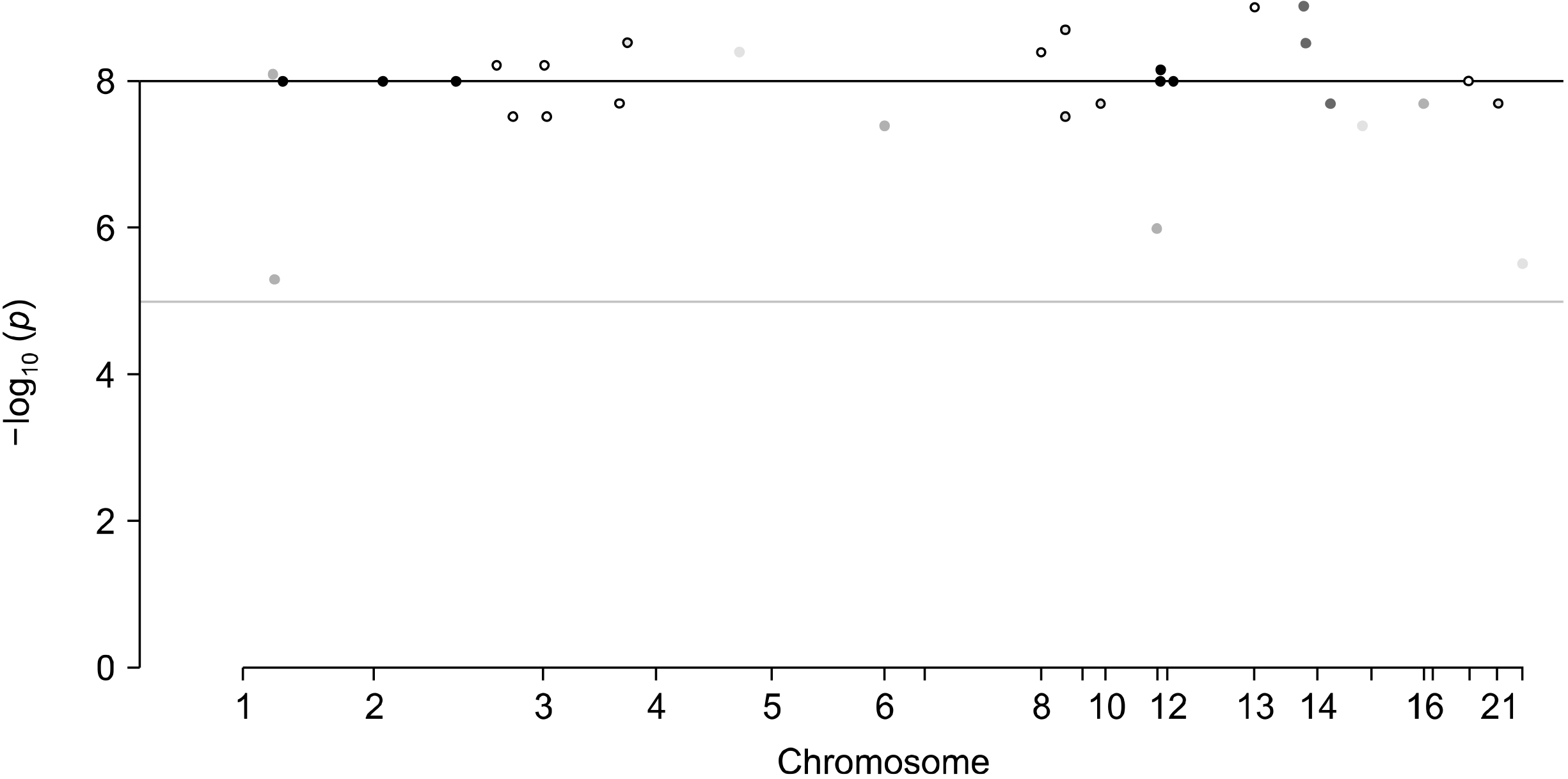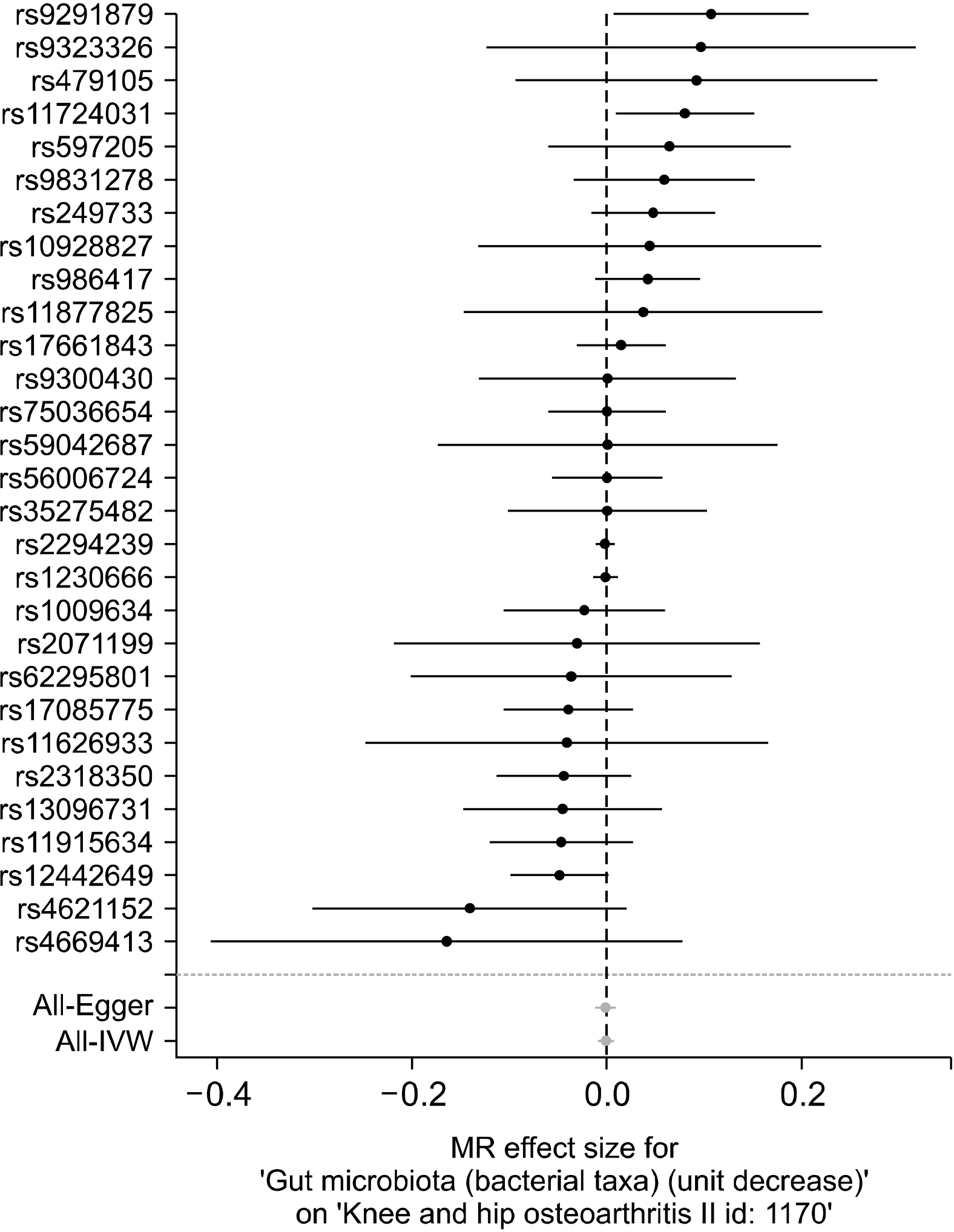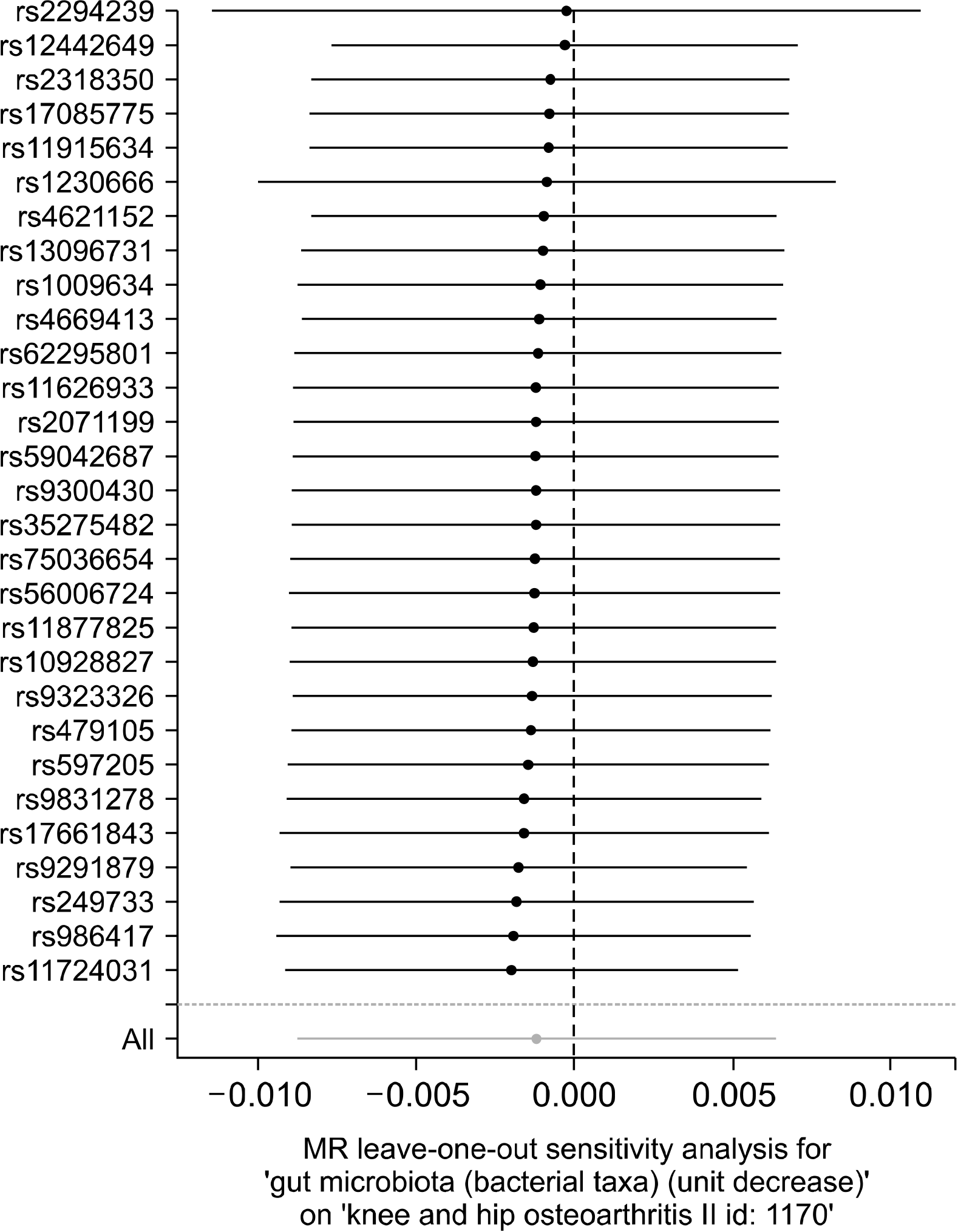2. Litwic A, Edwards MH, Dennison EM, Cooper C. 2013; Epidemiology and burden of osteoarthritis. Br Med Bull. 105:185–99. DOI:
10.1093/bmb/lds038. PMID:
23337796. PMCID:
PMC3690438.



3. Berthelot JM, Sellam J, Maugars Y, Berenbaum F. 2019; Cartilage- gut-microbiome axis: a new paradigm for novel therapeutic opportunities in osteoarthritis. RMD Open. 5:e001037. DOI:
10.1136/rmdopen-2019-001037. PMID:
31673418. PMCID:
PMC6803002.
4. Favazzo LJ, Hendesi H, Villani DA, Soniwala S, Dar QA, Schott EM, et al. 2020; The gut microbiome-joint connection: implications in osteoarthritis. Curr Opin Rheumatol. 32:92–101. DOI:
10.1097/BOR.0000000000000681. PMID:
31724973. PMCID:
PMC6903327.

5. Zhao Y, Chen B, Li S, Yang L, Zhu D, Wang Y, et al. 2018; Detection and characterization of bacterial nucleic acids in culture-negative synovial tissue and fluid samples from rheumatoid arthritis or osteoarthritis patients. Sci Rep. 8:14305. DOI:
10.1038/s41598-018-32675-w. PMID:
30250232. PMCID:
PMC6155189.

6. Griffin TM, Huebner JL, Kraus VB, Yan Z, Guilak F. 2012; Induction of osteoarthritis and metabolic inflammation by a very high-fat diet in mice: effects of short-term exercise. Arthritis Rheum. 64:443–53. DOI:
10.1002/art.33332. PMID:
21953366. PMCID:
PMC3268860.



7. Lorenzo D, GianVincenzo Z, Carlo Luca R, Karan G, Jorge V, Roberto M, et al. 2019; Oral-gut microbiota and arthritis: is there an evidence-based axis? J Clin Med. 8:1753. DOI:
10.3390/jcm8101753. PMID:
31652577. PMCID:
PMC6832398.
9. Burgess S, Daniel RM, Butterworth AS, Thompson SG. 2015; Network Mendelian randomization: using genetic variants as instrumental variables to investigate mediation in causal pathways. Int J Epidemiol. 44:484–95. DOI:
10.1093/ije/dyu176. PMID:
25150977. PMCID:
PMC4469795.


10. Song GG, Lee YH. 2019; Causal association between bone mineral density and osteoarthritis: a Mendelian randomization study. J Rheum Dis. 26:104–10. DOI:
10.4078/jrd.2019.26.2.104.

11. Welter D, MacArthur J, Morales J, Burdett T, Hall P, Junkins H, et al. 2014; The NHGRI GWAS Catalog, a curated resource of SNP-trait associations. Nucleic Acids Res. 42(Database issue):D1001–6. DOI:
10.1093/nar/gkt1229. PMID:
24316577. PMCID:
PMC3965119.

12. Wang J, Thingholm LB, Skiecevičienė J, Rausch P, Kummen M, Hov JR, et al. 2016; Genome-wide association analysis identifies variation in vitamin D receptor and other host factors influencing the gut microbiota. Nat Genet. 48:1396–406. DOI:
10.1038/ng.3695. PMID:
27723756. PMCID:
PMC5626933.



13. Bonder MJ, Kurilshikov A, Tigchelaar EF, Mujagic Z, Imhann F, Vila AV, et al. 2016; The effect of host genetics on the gut microbiome. Nat Genet. 48:1407–12. DOI:
10.1038/ng.3663. PMID:
27694959.


14. Zeggini E, Panoutsopoulou K, Southam L, Rayner NW, Day-Williams AG, Lopes MC, et al. arcOGEN Consortium and arcOGEN Collaborators. 2012; Identification of new susceptibility loci for osteoarthritis (arcOGEN): a genome-wide association study. Lancet. 380:815–23. DOI:
10.1016/S0140-6736(12)60681-3. PMID:
22763110. PMCID:
PMC3443899.


15. Burgess S, Butterworth A, Thompson SG. 2013; Mendelian randomization analysis with multiple genetic variants using summarized data. Genet Epidemiol. 37:658–65. DOI:
10.1002/gepi.21758. PMID:
24114802. PMCID:
PMC4377079.



16. Pierce BL, Burgess S. 2013; Efficient design for Mendelian randomization studies: subsample and 2-sample instrumental variable estimators. Am J Epidemiol. 178:1177–84. DOI:
10.1093/aje/kwt084. PMID:
23863760. PMCID:
PMC3783091.



17. Hartwig FP, Davies NM, Hemani G, Davey Smith G. 2016; Two-sample Mendelian randomization: avoiding the downsides of a powerful, widely applicable but potentially fallible technique. Int J Epidemiol. 45:1717–26. DOI:
10.1093/ije/dyx028. PMID:
28338968. PMCID:
PMC5722032.


18. Bowden J, Davey Smith G, Burgess S. 2015; Mendelian randomization with invalid instruments: effect estimation and bias detection through Egger regression. Int J Epidemiol. 44:512–25. DOI:
10.1093/ije/dyv080. PMID:
26050253. PMCID:
PMC4469799.



20. Bowden J, Davey Smith G, Haycock PC, Burgess S. 2016; Consistent estimation in Mendelian randomization with some invalid instruments using a weighted median estimator. Genet Epidemiol. 40:304–14. DOI:
10.1002/gepi.21965. PMID:
27061298. PMCID:
PMC4849733.



21. Hemani G, Zheng J, Elsworth B, Wade KH, Haberland V, Baird D, et al. 2018; The MR-Base platform supports systematic causal inference across the human phenome. Elife. 7:e34408. DOI:
10.7554/eLife.34408. PMID:
29846171. PMCID:
PMC5976434.

24. Schott EM, Farnsworth CW, Grier A, Lillis JA, Soniwala S, Dadourian GH, et al. 2018; Targeting the gut microbiome to treat the osteoarthritis of obesity. JCI Insight. 3:e95997. DOI:
10.1172/jci.insight.95997. PMID:
29669931. PMCID:
PMC5931133.

25. Metcalfe D, Harte AL, Aletrari MO, Al Daghri NM, Al Disi D, Tripathi G, et al. 2012; Does endotoxaemia contribute to osteoarthritis in obese patients? Clin Sci (Lond). 123:627–34. DOI:
10.1042/CS20120073. PMID:
22888972.


26. Thompson JR, Minelli C, Bowden J, Del Greco FM, Gill D, Jones EM, et al. 2017; Mendelian randomization incorporating uncertainty about pleiotropy. Stat Med. 36:4627–45. DOI:
10.1002/sim.7442. PMID:
28850703.

27. Smith GD, Ebrahim S. 2004; Mendelian randomization: prospects, potentials, and limitations. Int J Epidemiol. 33:30–42. DOI:
10.1093/ije/dyh132. PMID:
15075143.


28. Swerdlow DI, Kuchenbaecker KB, Shah S, Sofat R, Holmes MV, White J, et al. 2016; Selecting instruments for Mendelian randomization in the wake of genome-wide association studies. Int J Epidemiol. 45:1600–16. DOI:
10.1093/ije/dyw088. PMID:
27342221. PMCID:
PMC5100611.








 PDF
PDF Citation
Citation Print
Print






 XML Download
XML Download